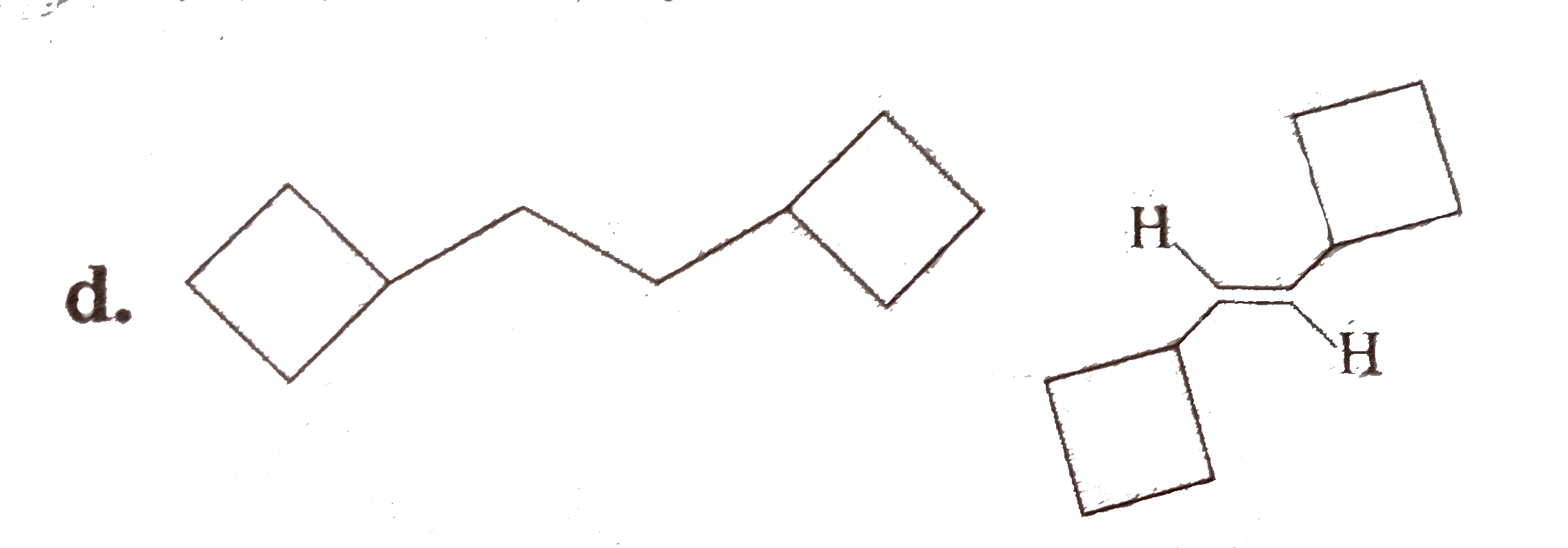a. 
Identigy (B) and (C) and also explain the formation of C14(C∗) in the compound (C).
It is an example of allylic bromination and procedds via free − radical mechanism.

Topper's Solved these Questions
- ALKENES AND ALKADIENESBOOK - CENGAGE CHEMISTRYCHAPTER - ALKENES AND ALKADIENESEXERCISE - EXERCISES
29 Videos
- ALKENES AND ALKADIENESBOOK - CENGAGE CHEMISTRYCHAPTER - ALKENES AND ALKADIENESEXERCISE - linked Comprehension Type
38 Videos
- ALKENES AND ALKADIENESBOOK - CENGAGE CHEMISTRYCHAPTER - ALKENES AND ALKADIENESEXERCISE - Single correct Answer
14 Videos
- ALKANES AND CYCLOALKANESBOOK - CENGAGE CHEMISTRYCHAPTER - ALKANES AND CYCLOALKANESEXERCISE - Archives
13 Videos
- ALKYNESBOOK - CENGAGE CHEMISTRYCHAPTER - ALKYNESEXERCISE - Exercises (Archives - Analytical and Desriptive Type)
4 Videos
Similar Questions
Knowledge Check

Compounds (B) and (C) are :A B
B C
C D
D

Compounds (B) and (C) are:A B
B C
C DB is (I) and C is (II)
DB is (I) and C is (II)
Compound (B) and (C) are :A B
B C
C D
D
An organic compound (A) C8H4O3 in dry benzene in the presence of anhydrous AlCl3 gives compound (B), the compound (B) on treatment with PCl5 followed by reaction with H2/Pd(BaSO4) gives compound ( C ) which on reaction with hdyrazine gives a cyclized compound (D) C14H10N2. Identify (A), (B), ( C ), and (D). Explain the formation of (D) from ( C ).
View SolutionAn organic compound (A) C8H4O3 , in dry bebzene in the presence of anhydrous AlCl3 gives compound (B ). The compound (B) on treatment with PCl5 followed by reaction with H2/Pd(BaSo4) gives compound (C ) which on reaction with hydrazine gives a cyclide compound (D) (C14H10N2). Identify (A), (B) (C ), and (D) Explain the formation of (D ) from (C ).
View SolutionAn organic compound (A),C8H4O3 in dry benzene in the presence of anhydrous AlCl3 gives ,compound (B). The compound (B) on treatement with PCl5 followed by reaction with H2/Pd−BaSO4 gives compound C, which on reaction with hydrazine gives a cyclised compound (D) of formula C14H10N2. Identify (A),(B),(C ) and (D). Explain the formation of (D) and (C ).
View SolutionAn organic compound (A),C8H4O3 in dry benzene in the presene of anhydorus AlCl3 gives compound (B). Compound (B) on treatment with PCl5 followed by reaction with H2/Pd(BaSO4) gives compound (C) which on reaction with hydrazine gives a cyclised compound (D),(C14H10N2) Idenyify (A),(B),(C) and (D). Explain the formation of (D) from (C).
View SolutionIn the reaction a+3B→2C, the rate of formation of C is
View Solution


